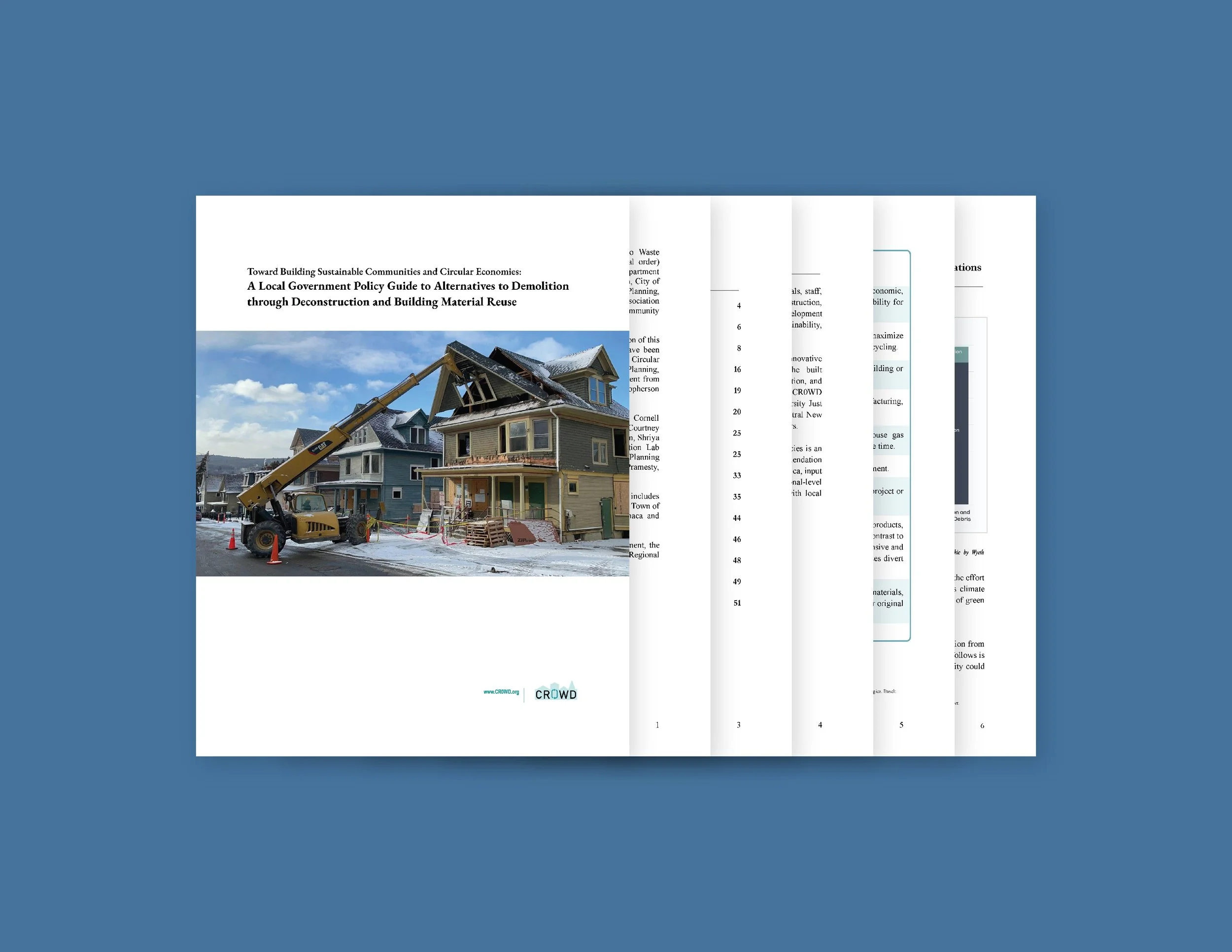Deconstruction Research and Advocacy
During my Master’s program, I became heavily involved with the Circularity, Reuse and Zero Waste Development (CR0WD) Network based out of Ithaca, New York. CR0WD seeks to advance sustainability, resilience, and green jobs within the built environment by helping communities realize the environmental, economic, and cultural benefits of reusing buildings and building materials through research, education, policy, design, and development of an equitable green workforce. As part of my contributions to CR0WD, I have conducted extensive research into policy tools used to support the deconstruction of buildings as opposed to the wasteful practice of mechanical demolition. Some of my work, including my graduating research paper can be viewed below.
Research Paper: Which Buildings are “Worth” Disassembling? An Analysis of American Deconstruction Ordinances
Construction and demolition (C&D) waste represents the single largest waste stream in the United States. 90% of C&D waste is produced at a structure’s end-of-life through conventional mechanical demolition, which renders materials valueless, effectively wasting their embodied carbon while also producing harmful airborne toxins. Alternatively, structural removal through deconstruction produces comparatively less waste and other negative externalities. As deconstruction has gained popularity in the US, four cities have produced ordinances that require some buildings to be deconstructed: Portland (2016), Milwaukee (2017), Palo Alto (2019), and San Antonio (2022). Through interviews with local representatives, analysis of ordinance language, and review of city progress reports, this research explores the origins of the ordinances, the thinking that shaped them, and their eventual outcomes. This work provides a survey of American ordinances, challenges prevailing assumptions, and provides recommendations for other municipalities considering deconstruction.
View the paper below and download the PDF on Cornell eCommons.



